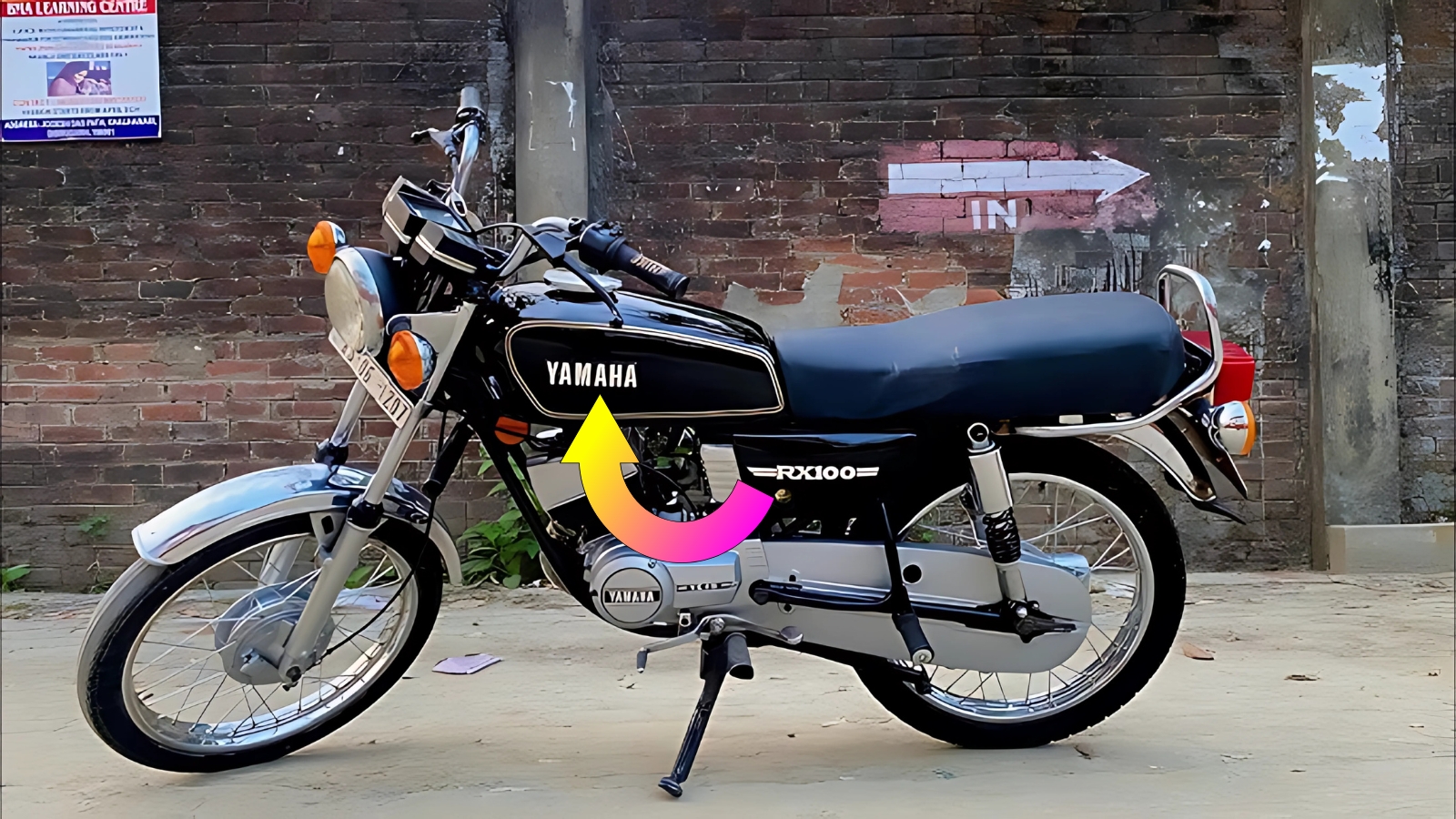Yamaha RX 100 : Yamaha is reportedly considering the revival of the legendary RX 100, a motorcycle that achieved iconic status in the Indian market during the 1980s and 1990s before being discontinued due to emission regulations. The potential return of this beloved machine represents more than just product nostalgia – it signifies Yamaha’s recognition of the deep emotional connection that enthusiasts maintain with motorcycles that defined an entire generation’s riding experience.
The original RX 100 earned legendary status through its distinctive two-stroke engine character, lightweight construction, and affordable performance that made motorcycling accessible to countless riders. Its discontinuation left a void in the market that has never been adequately filled, with enthusiasts continuing to restore and maintain existing examples despite parts scarcity and regulatory challenges.
This anticipated revival comes at a time when motorcycle manufacturers are increasingly recognizing the commercial value of heritage models and retro styling that appeals to both nostalgic older riders and younger enthusiasts seeking authentic motorcycling experiences. Yamaha’s approach with the RX 100 could demonstrate how classic motorcycles can be reimagined for contemporary markets while preserving their essential character.
Heritage Design Meeting Modern Engineering Requirements
The new RX 100 would likely retain the visual DNA that made the original instantly recognizable while incorporating contemporary engineering solutions that meet current emission and safety standards. The design philosophy would need to balance nostalgic appeal with practical requirements for modern motorcycle ownership.
Frame geometry could maintain the lightweight, agile characteristics that defined the original’s handling while incorporating modern materials and construction techniques that improve durability and safety. The chassis would need to support contemporary suspension components and braking systems while preserving the nimble feel that made the RX 100 so appealing.
Engine development represents the most significant challenge, as the distinctive two-stroke powerplant that defined the original’s character cannot meet current emission regulations. Yamaha’s engineers would need to create a four-stroke alternative that captures the original’s spirited performance and distinctive sound character while meeting environmental standards.
Styling elements would likely include the distinctive fuel tank shape, minimalist bodywork, and classic proportions that made the RX 100 visually appealing. Modern touches would be integrated subtly to maintain authenticity while providing contemporary functionality and safety features.

Contemporary Performance with Classic Character
The modern RX 100 would need to deliver performance that honors the original’s reputation while meeting contemporary expectations for reliability, fuel efficiency, and environmental compliance. This balance requires sophisticated engineering that preserves character while embracing modern technology.
Engine characteristics would emphasize responsive throttle behavior and engaging power delivery that recreates the involvement and excitement that made the original so memorable. While a four-stroke engine cannot perfectly replicate two-stroke behavior, careful tuning could create a satisfying riding experience.(Yamaha RX 100)
Fuel injection technology would provide precise mixture control for optimal performance and emissions compliance while maintaining the immediate throttle response that enthusiasts expect. Modern engine management would enable performance optimization while ensuring reliability and longevity.
Transmission characteristics would likely retain the original’s direct, mechanical feel while incorporating modern materials and manufacturing precision that improve durability and reduce maintenance requirements.
Market Strategy and Enthusiast Appeal
Yamaha’s approach to RX 100 revival would need careful market positioning that attracts both nostalgic former owners and new riders seeking authentic motorcycling experiences. The pricing strategy would balance accessibility with the premium associated with heritage models.
Target audience would include middle-aged riders who owned original RX 100s and younger enthusiasts drawn to classic motorcycle aesthetics and character. The marketing approach would emphasize heritage, authenticity, and the unique riding experience that distinguished the original.
Production strategy might initially focus on limited numbers to gauge market response while ensuring quality and exclusivity. Success could lead to broader availability and potential variants that expand the heritage model range.
Modern Features Supporting Classic Appeal
Contemporary RX 100 would likely include modern safety features, reliable electric starting, and improved lighting while maintaining the simplicity and accessibility that defined the original. Technology integration would be minimal to preserve the pure motorcycling focus.
Service network development would ensure adequate support for maintenance and parts availability, addressing concerns that limited the original’s long-term viability in later years.
Redmi Note 15 Pro 5G – iPhone design smartphone comes with DSLR camera
Yamaha RX 100 Legacy and Future Impact
The RX 100’s potential return represents Yamaha’s commitment to honoring motorcycle heritage while serving markets that value authentic riding experiences over technological complexity.
For enthusiasts seeking genuine motorcycle character and heritage authenticity, the revived RX 100 could provide compelling value that bridges nostalgic appeal with contemporary reliability and environmental responsibility in an accessible package that honors the legendary original.
